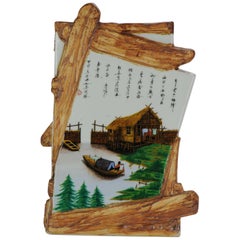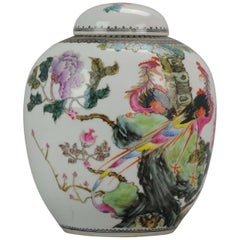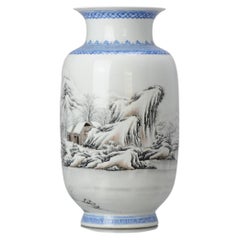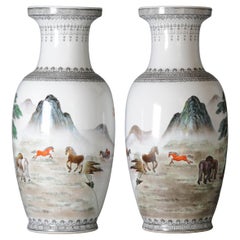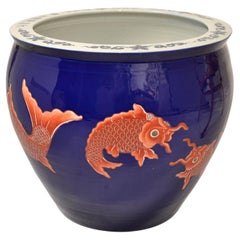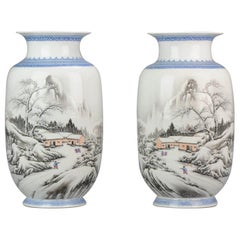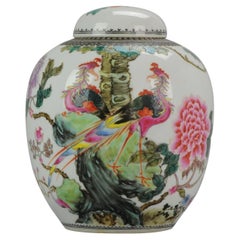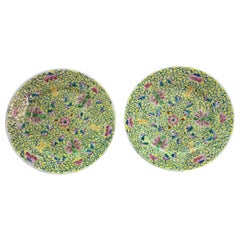Marked Chinese Porcelain
20th Century Chinese Ceramics
Porcelain
20th Century Chinese Ceramics
Porcelain
20th Century Chinese Ceramics
Porcelain
20th Century Chinese Qing Ceramics
Porcelain
20th Century Chinese Chinoiserie Planters and Jardinieres
Porcelain, Paint
20th Century Chinese Ceramics
Porcelain
20th Century Chinese Vases
Porcelain
20th Century Chinese Porcelain
Porcelain
20th Century Chinese Qing Ceramics
Porcelain
Early 20th Century Chinese Chinese Export Ceramics
Porcelain
20th Century Chinese Ceramics
Porcelain
Early 20th Century Chinese Chinese Export Ceramics
Enamel
Antique 19th Century Chinese Other Ceramics
Porcelain
20th Century Chinese Vases
Porcelain
Antique 18th Century Chinese Qing Ceramics
Porcelain
20th Century Chinese Ceramics
Porcelain
Antique 17th Century Chinese Qing Ceramics
Porcelain
Antique 17th Century Chinese Qing Ceramics
Porcelain
Antique 17th Century Chinese Qing Ceramics
Porcelain
Antique 18th Century Chinese Qing Planters, Cachepots and Jardinières
Porcelain
Antique Late 19th Century Chinese Vases
Porcelain
Antique 18th Century Chinese Qing Decorative Dishes and Vide-Poche
Porcelain
Antique 17th Century Chinese Ming Ceramics
Porcelain
20th Century Chinese Vases
Porcelain
Antique 18th Century Chinese Ceramics
Porcelain
Antique 17th Century Chinese Qing Ceramics
Porcelain
Antique 17th Century Chinese Qing Ceramics
Porcelain
Antique 17th Century Chinese Qing Ceramics
Porcelain
Antique 17th Century Chinese Ming Planters, Cachepots and Jardinières
Porcelain
20th Century Chinese Decorative Art
Porcelain
20th Century Chinese Ceramics
Porcelain
20th Century Chinese Decorative Dishes and Vide-Poche
Porcelain
Antique 17th Century Chinese Ming Ceramics
Porcelain
20th Century Chinese Ceramics
Porcelain
20th Century Chinese Tea Sets
Porcelain
Antique 17th Century Chinese Qing Ceramics
Porcelain
Antique 17th Century Chinese Ming Ceramics
Porcelain
Antique 17th Century Chinese Qing Ceramics
Porcelain
20th Century Chinese Planters, Cachepots and Jardinières
Porcelain
Antique 18th Century Chinese Decorative Dishes and Vide-Poche
Porcelain
Antique 17th Century Chinese Ming Ceramics
Porcelain
Antique 18th Century Chinese Decorative Dishes and Vide-Poche
Porcelain
21st Century and Contemporary Chinese Ceramics
Porcelain
Antique 18th Century Chinese Qing Ceramics
Porcelain
20th Century Chinese Ceramics
Porcelain
20th Century Chinese Ceramics
Porcelain
Antique Late 19th Century Chinese Qing Ceramics
Porcelain
Antique 19th Century Chinese Qing Decorative Dishes and Vide-Poche
Porcelain
Antique 19th Century Chinese Qing Ceramics
Porcelain
Antique 17th Century Chinese Qing Ceramics
Porcelain
Antique 19th Century Chinese Qing Scholar's Objects
Porcelain
20th Century Chinese Vases
Porcelain
20th Century Chinese Decorative Dishes and Vide-Poche
Porcelain
Antique 17th Century Chinese Qing Dinner Plates
Porcelain
20th Century Chinese Qing Vases
Porcelain
Antique Late 19th Century Chinese Qing Ceramics
Porcelain
20th Century Chinese Vases
Porcelain
Antique 19th Century Chinese Serving Pieces
Porcelain
- 1
Marked Chinese Porcelain For Sale on 1stDibs
How Much is a Marked Chinese Porcelain?
- 1stDibs ExpertAugust 20, 2024To identify Chinese porcelain marks, consult trusted online resources. Most markings on Chinese porcelain consist of four to six characters, and the last two often represent when a piece was produced. Since there is a lot of variation in the markings, looking at images shared on trustworthy websites is the best way to make an identification. Alternatively, you can use the services of a certified appraiser or knowledgeable antique dealer. On 1stDibs, explore a wide range of Chinese porcelain.
- 1stDibs ExpertSeptember 23, 2024There are a few ways to identify porcelain marks. The quickest method is photographing the marking and performing a reverse image search. Often, this approach will allow you to quickly identify the maker of your porcelain. Alternatively, you can type a short description of the mark into a search engine or review trusted reference websites that show images of popular makers’ markings. If these approaches don't provide you with enough information to make a confident identification, a certified appraiser or knowledgeable antique dealer can assist you. On 1stDibs, find a large selection of porcelain.
- 1stDibs ExpertApril 5, 2022The Kangxi mark appears on porcelain created in China during the Kangxi period, 1662-1722. There are two types of Kangxi marks: a reign mark and a potter’s personal mark. Reign marks are six-character marks in two vertical lines with a double circle around them. Other marks vary and indicate a potter’s personal mark. They could be a picture, a blank circle or a character. Browse a variety of authenticated Kangxi porcelain on 1stDibs.
- 1stDibs ExpertApril 5, 2022Yes, Sevres porcelain is always marked. Sevres is known for a double L mark that features an interlocking shape with a year or symbol to denote the year produced within the design. Shop a selection of authenticated Sevres porcelain goods on 1stDibs.
- 1stDibs ExpertApril 5, 2022To identify German porcelain marks, use an authoritative online resource. If the mark contains words, enter them into a search engine surrounded by quotation marks. Otherwise, enter a description of the mark. You can also seek the advice of a licensed appraiser. Shop a collection of expertly vetted German porcelain on 1stDibs.
- 1stDibs ExpertSeptember 23, 2024One way to identify French porcelain marks is to take a photo with your smartphone or tablet and then perform a reverse image search. Often, doing so will allow you to quickly determine the maker. If this approach fails, explore trusted online resources with photographs of the markings associated with various French makers, such as the crowned N of Sèvres and the H & Co. insignia of Haviland. Another option is to have a certified appraiser or knowledgeable antique dealer perform the identification for you. On 1stDibs, find a wide variety of French porcelain.
- 1stDibs ExpertNovember 4, 2024To identify Furstenberg pottery marks, use the official Furstenberg website, where you'll find a reference guide that makes interpreting the markings on your pottery simple. Most pieces feature a blue or green “F” mark under the glaze. On the bottom, you will also normally find stamped numbers representing the motif and decoration techniques and fainter, raised letters or numbers corresponding to the specific artisan who made it. If you run into any difficulty using the brand's official reference guide, a certified appraiser or knowledgeable antique dealer can be of assistance. On 1stDibs, shop a collection of Furstenberg pottery.
- 1stDibs ExpertNovember 26, 2024To identify Staffordshire porcelain marks, first look to see if your piece has a loosely knotted rope logo. Some items produced in Staffordshire bear this mark. Many pieces also feature a second or alternate maker's mark corresponding to the factory that produced it, such as Spode, Minton and Wedgwood. Online reference guides published on trusted websites can help you determine who made your piece based on these markings. Keep in mind that some Staffordshire porcelain is completely unmarked. If you can't locate a marking, consider having a certified appraiser or knowledgeable antique dealer assist you. Explore a wide variety of Staffordshire porcelain on 1stDibs.
- 1stDibs ExpertApril 5, 2022Chinese Canton porcelain is a type of decorative hand-painted ceramic ware produced during the 18th, 19th and 20th centuries in China. Its name comes from the region where it originated. You will sometimes see it referred to as Cantonese porcelain. On 1stDibs, find a selection of Chinese Canton porcelain.
 Lotus GallerySeptember 15, 2020
Lotus GallerySeptember 15, 2020Chinese porcelain can usually be dated by form and decoration. However, copies and forgeries abound, so you should have an expert such as an appraiser, reputable dealer or auction house, or museum examine your porcelain to accurately date it.
- What is Chinese porcelain called?2 Answers
 PAGODA REDOctober 7, 2020
PAGODA REDOctober 7, 2020True porcelain ware was developed in the 11th century at the imperial kilns of Jingdezhen, Jiangxi province, China. These early porcelains of the Song and Yuan dynasties are known as Qingbai or Yingqing ware, defined by a light blue-grey glaze. Later forms of Chinese porcelain include blue and white underglaze ware, Celadon ware, Jun ware, Famille Verte ware, Wucai (Five Color) ware, and Dehua ware, also known as Blanc de Chine.
 Lotus GalleryMarch 17, 2021In China, porcelain is referred to a "cíqì" 瓷器.
Lotus GalleryMarch 17, 2021In China, porcelain is referred to a "cíqì" 瓷器. - 1stDibs ExpertApril 5, 2022A Chinese porcelain pillow is a type of ceramic object produced by Chinese artisans. They normally have highly decorative rectangular designs and feature curved tops. Historically, they functioned as headrests, but today they normally serve purely as decorations. On 1stDibs, shop a wide variety of Chinese porcelain ware.
- 1stDibs ExpertMarch 15, 2024To identify French Limoges porcelain marks, refer to trusted online resources. There are dozens of markings associated with Limoges porcelain. By comparing the marks on your piece to images shared online, you can determine if your piece is a Limoges. A certified appraiser or knowledgeable antiques dealer can also assist you with identification. Explore a range of Limoges porcelain on 1stDibs.
- 1stDibs ExpertApril 5, 2022To identify Chinese export porcelain, first look for a mark. Most pieces made after 1891 feature a maker's mark that you can research using authoritative online resources. Identifying older porcelain ware is more difficult. A licensed appraiser can provide assistance. You'll find a range of expertly vetted Chinese export porcelain on 1stDibs.
- 1stDibs ExpertApril 5, 2022You can sell old Chinese porcelain in a few ways. You can advertise the piece locally or work with an antique shop or auction house. There are also reputable online platforms available for selling online. Shop a collection of Chinese porcelain on 1stDibs.
- 1stDibs ExpertApril 5, 2022Chinese Kangxi porcelain was popular because of its particular blue colorings. The blue was made using cobalt ore which was imported from Persia. As cobalt ore was a scarce ingredient, the rarity made the porcelain items highly sought after. Shop a collection of Chinese Kangxi porcelain from some of the world’s top sellers on 1stDibs.
- 1stDibs ExpertApril 5, 2022Chinese blue and white porcelain is the most common type of decorated porcelain. Its name in Chinese is qinghua. On 1stDibs, you’ll find a collection of antique and modern Chinese blue and white porcelain from some of the world’s top sellers.
 PAGODA REDOctober 21, 2020
PAGODA REDOctober 21, 2020For thousands of years, China’s court-sponsored porcelain industry has been at the forefront of technical innovation and aesthetic refinement. Exquisite finishes and precision of form gave China an international reputation for fine ceramic wares. Age, shape, glaze, motif, and reign mark are all factors contributing to the value of a ceramic piece, indicative of the maker and the dynastic reign under which the object was created.
 Lotus GallerySeptember 23, 2020
Lotus GallerySeptember 23, 2020The best way to know is to take it to an expert, such as an appraiser, reputable dealer or auction house, or museum
- 1stDibs ExpertMarch 22, 2022Chinese blue and white porcelain is called qinghua, pronounced “CHING-hwa.” Artisans first began producing the porcelain during the Tang and Song dynasties ranging from 609 to 1279. However, the techniques the pottery is most well known for weren't developed until the subsequent Ming era, which lasted until 1644. You'll find a collection of Chinese porcelain on 1stDibs.
